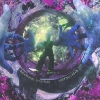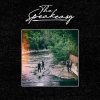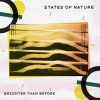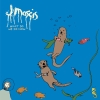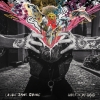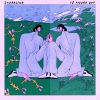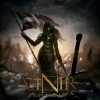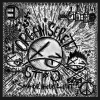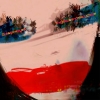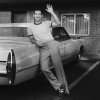Gig Reviews
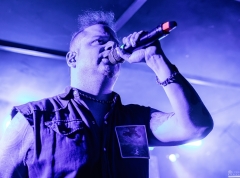
Thy Catafalque
Stengade, Copenhagen, DEN - 6/4
Album Reviews
Between The Buried And Me
Previous Nextauthor AP date 14/10/11
Just as we today consider bands like Black Sabbath, Death, Iron Maiden, Judas Priest, Metallica, Pantera, Slayer, Venom to be metal immortals, so too might Between the Buried and Me one day be remembered as a band that pushed the envelope of the genre and influenced generations to come. One glance at the songs featured on their tribute album, “The Anatomy of”, will reveal the colossal reach of their own influences, from classic rock to thrash and death metal, but it will not explain the breadth of their sound; one of the most eclectic creations of the decade.
We’ve never been afraid of letting songs evolve and take whatever crazy direction they might
But while certain elements have always been part of the band’s unique style ever since its inception in 2001, Between the Buried and Me are also known for consistently pushing themselves. “We’ve never been afraid of letting songs evolve and take whatever crazy direction they might”, explains bassist Dan Briggs, and continues, “I think the sound has retained the same general idea of being this experimental, progressive metal, but we’ve been a lot more focused on the last few CDs on the more progressive, weirder side of life.” Dan joined the band in 2004, leaving his second year as a music performance major at college studying upright bass, in order to pursue his love of progressive rock, specifically Frank Zappa, King Crimson and Yes. “It was a classical curriculum, and it wasn’t really where my heart was. I was honestly planning on leaving anyway and going to a school that was more tailored towards a newer school of thinking. Basically I just wanted to play electric bass; upright bass was killing me.”
And given the critical acclaim surrounding every Between the Buried and Me album since, Briggs probably never regretted his decision. Along with rhythm guitarist Dustie Waring’s love of dark, somber music in the vein of Hours and drummer Blake Richardson’s passionate fixation on Meshuggah, his 70’s prog influence expanded an already eccentric palette for breakthrough album “Alaska” in 2005. “Paul is actually really into country, bluegrass and guitar-driven jazz à la Matt Nathaniel and Allan Holdsworth”, muses Briggs when asked to map out the band’s influences. “Tommy has always been all over the place. He likes everything from Mr. Bungle to Radiohead to black metal. Obviously we all love bands like Dream Theater, Opeth and the Mars Volta. Those are all bands that have influenced us along with King Crimson, Yes, and over the last few years, Slow Motion Orchestra.”
We would never say no to anything because our sound is so open.
Given the non-metallic tendencies of a large portion of their heroes, it is hardly a surprise then that the band has often toyed with purely melodic songs as well. But could they ever see themselves writing an album akin to Opeth’s latest opus, “Heritage”, completely devoid of their heavier self? “I don’t know. We’ve hinted at it here and there”, remembers Briggs. “I feel like ‘The Great Misdirect’, ‘Alaska’ and ‘The Silent Circus’ all have songs that are purely clean guitar. When we go into a writing session we never really know what the final outcome is going to be. If we happen to show up at the space and all we have are these melodic parts, then that’s probably going to be it. We would never say no to anything because our sound is so open. We’re used to thinking in terms of albums, and we like for an album to have ups and downs with dynamics, so I feel like that’s probably always going to be in there. But maybe someday we’ll do something short, like an EP, in that vein.”
Speaking of EPs, the band recently released one under the obscure title of “Hypersleep Dialogues”, which we understand to be the first release in a two-part conceptual album suite called “The Parallax”, an ambitious undertaking even for a band accustomed to writing demanding music. So ambitious, in fact, that releasing it as a single album was out of the question, especially given the band’s expiring contract with Victory Records. “Before we even had the idea for the concept, way back when we were still touring ‘The Great Misdirect’, we knew that it was going to be our last record with Victory. We had the idea in our head that we were going to do an EP; either it was going to be testing the waters with the new label or us doing it ourselves. We can do an EP pretty easily. I mean we can write full-lengths pretty easily”, Briggs proudly remarks without a hint of condescension. “It ended up being a good method for testing a few things. Obviously, we had a new label, Metal Blade, and worked with a new producer, David Bottril, so I think we all felt a little bit more comfortable going into that kind of situation.” In addition, the band also traveled north to Canada to record the EP in the space of a few weeks, a scenario which forced the band out of their comfort zone. “I think working on a half hour of music instead of an hour plus made it easier for us to transition.”
This story is so fucking sci-fi…
Once the concept came into play, Briggs and his band mates realized that it was something that could be pretty massive in the scape of telling a story and would transcend the traditional confines of an album. The band has hinted at it before: “Colors” was a concept album musically, but not as far as the lyrics went. “That’s something we’ve always wanted to do because some of our favorite records are concept records”, he contemplates. As such, “The Parallax” picks up from where “Swim to the Moon” ends on “The Great Misdirect”, with a character abandoning his life, getting on a boat and sailing away. “This album suite starts with him ending up on an island, and he’s still trying to come to terms with everything in his life and everything that’s happening back in whatever land he left from. Then throughout the course of the first song you are introduced to another character, who, you find out, is in a completely different plane of existence, almost like a parallel universe. This first EP deals with the struggles that they’re both going through and the different methods that they’re using to come to terms with it.” Then, as Briggs explains, it gets a little complicated. “This story is so fucking sci-fi when it gets to this point. This is where we had this initial idea and then Paul kind of ran away with it. This character in the alternate universe, his planet is dying because they’ve used up its resources, and he’s trying to seek out a new planet, which turns out to be the Earth in the process. The last song, ‘Lunar Wilderness’ ends with him returning to his planet because of a space-time continuum difference. His planet is dead and gone, and that’s how the EP ends on a very somber note. Musically, it sounds like an unsure ending. You’re not sure what’s going on, or what’s going to happen next. And that just makes way for the rowdy death metal rock opera that’s going to happen next. I’m so excited to write it. It’s going to be crazy.”
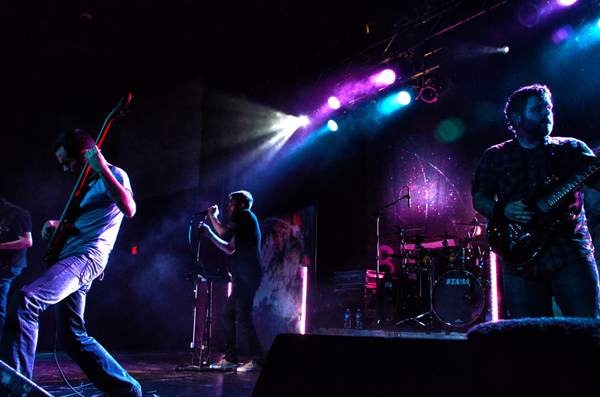
Indeed, some might say the band’s music is the metal equivalent of an opera, but surprisingly the music is rarely written with this in mind. “I remember when we were working on ‘The Great Misdirect’, one of the first things I was writing was the whole beginning of ‘Swim to the Moon’, and just from those four minutes I knew the song was going to be out of control. Sometimes, depending on what you’re writing, you can kind of tell what the overall look of the song is going to be, but generally you have no idea because you just write parts, and then you meet up with the rest of the band and see what they’ve got going on. And once you start putting a few things together, that’s when it gets out of control, and you’re able to understand the songs a little better.” Whether or not this is the case with the next album is too early to tell, says Briggs, but given the scope of the band’s repertoire thus far, it would be a mistake to expect anything short of grandeur.
It seems like with every new record, and with every new song we write, there’s an old song that leaves our brain.
But with five albums and an EP with songs that rarely clock in at less than five minutes, the band frequently runs into problems putting together a live setlist. “It’s extremely difficult”, Briggs admits, especially as the band’s growing success continues to attract new fans. “The trouble is that there’s such a small percent of people that know the first two albums, so any time that we throw something in from those that’s not a more known song like ‘Mordecai’ off ‘The Silent Circus’, people just stare at us and it gets kind of awkward. Now we’re at a stage where not a lot of people even go back to ‘Alaska’, so our set is really dominated by ‘Colors’, ‘The Great Misdirect’ and the new stuff.” Briggs goes on to explain that the band rarely mixes up the setlist on a nightly basis due to the demanding nature of the songs. “It seems like with every new record, and with every new song we write, there’s an old song that leaves our brain. Before this tour we had three months off for the summer, and in that space of time everything Between the Buried and Me left my brain, so there was a massive re-learning session. I spent a good week before we actually got together to rehearse, just going over stuff, re-learning stuff, and trying to play stuff consistently. Thankfully for me, I’ve always written up the albums that we do, so I always have books for reference, because when it comes to re-learning something off ‘Alaska’ or ‘Colors’, there are parts and transitions that I just can’t remember otherwise.” But once he is actually on stage, none of that matters. “Once your adrenaline kicks in, it’s totally different. Then it’s about getting that motor memory going.”
Indeed, one would think that performing mammoth songs like “White Walls” or “Swim to the Moon” live would be a demanding task even for virtuosos like Between the Buried and Me, one that requires more than mere instrumental skill. Briggs agrees. “’White Walls’, because we’ve played it so many times, I space out. I feel like every night I walk off stage, I don’t even remember playing certain passages from it. We only played ‘Swim to the Moon’ on one U.S. tour right after the album came out, and we played it on one date in the UK, and possible in Thailand also. That song was hard mentally to do, and honestly, when we did it on the tour it really sucked because we ended our set with that. So we’d been playing for an hour, and then we ended with ‘Swim to the Moon’ before coming back and playing ‘White Walls’. That was hard, mentally preparing for knowing that when you’re starting ‘Swim to the Moon’, you still have a good half hour more to go. Many bands would consider that a full set.”
I feel like I’m not even in Between the Buried and Me when I’m playing 'Disease, Injury, Madness'
Briggs himself has always had a soft spot in his heart for playing songs off “Colors”, but he admits that “Disease, Injury, Madness”, with its relatively simple structure and blues inspired solo section, is his favorite. “I don’t know what it is. I feel like I’m not even in Between the Buried and Me when I’m playing it; I feel like I’m in the Allman Brothers!” As for listening, Briggs prefers songs that he didn’t personally even play on for nostalgia purposes. “I can always pop the first two records on and not even associate that it’s the same band that I’m playing in, because when both of those came out I was just a fan of the band.” But at the same time, he is confident the band’s records have gotten better and better over the years, and will continue in that vein. It would be naïve to disagree or doubt this, and we at least cannot wait to hear what promises to be an album on par with “Colors” in terms of ambition.
 Twitter
Twitter Facebook
Facebook